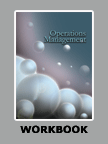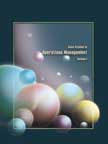Supply Chain Management at GCMMF
|
|
ICMR HOME | Case Studies Collection
Case Details:
Case Code : OPER057
Case Length : 14 Pages
Period : 1991 - 2006
Organization : GCMMF, AMUL
Pub Date : 2006
Teaching Note :Not Available
Countries : India
Industry : Dairy Products
To download Supply Chain Management at GCMMF case study
(Case Code: OPER057) click on the button below, and select the case from the list of available cases:

Price:
For delivery in electronic format: Rs. 300;
For delivery through courier (within India): Rs. 300 +Shipping & Handling Charges extra
» Operations Case Studies
» Case Studies Collection
» ICMR HOME
» View Detailed Pricing Info
» How To Order This Case
» Business Case Studies
» Case Studies by Area
» Case Studies by Industry
» Case Studies by Company 
Please note:
This case study was compiled from published sources, and is intended to be used as a basis for class discussion. It is not intended to illustrate either effective or ineffective handling of a management situation. Nor is it a primary information source.
Chat with us

Please leave your feedback

|
|




<< Previous
Introduction Contd...
|
It had also expanded globally to countries in the Middle East, Africa, and to
the US. The export earnings of GCMMF were Rs. 1.15 billion in the financial year
2004-05.
GCMMF was owned by a chain of farmers who had formed a network of cooperative
societies. Milk was collected from more than 2.4 million farmers in 11,615
villages twice a day, and tested, graded, and transported to the processing
centers.
GCMMF's products were marketed through 50 sales offices located across
India to 4,000 stockists. These stockists supplied the products to more than
500,000 retail outlets.
|

|
According to Verghese Kurien (Kurien), former Chairman, GCMMF, "Amul is the
epitome of a unique model of cooperative development called the Amul
Pattern. It is also the spearhead of the cooperative movement in India. It
has empowered farmers through skills of procurement, processing,
marketing-and more recently of being in direct touch with the customer
through retailing. This ensures not only fair returns for milk produced, but
also a never before closeness to the market facilitating a real time feel of
its pulse."5
|
|
About GCMMF
The seeds of the cooperative movement, which helped turn India into the
largest milk producer in the world by 2000, were sown in 1946 in Samarkha,
when a farmers' meeting was called by Morarji Desai (Desai), (who later
became the Prime Minister of India) on the advice of Vallabhbhai Patel (who
became the first home minister of India). Desai and Vallabhbhai Patel
assigned Tribhuvandas Patel (Patel), a local farmer and freedom fighter, the
task of organizing the farmers into a cooperative unit. The cooperative
found its place in history by becoming the first cooperative milk society in
India that went on to break the system of middlemen. |
Earlier, in 1945, the distribution and supply of milk in
Mumbai (earlier known as Bombay) was managed by Polson Dairy, which obtained the
milk from Kaira district in Gujarat. Polson gave the milk producers a very low
price for the milk. Patel encouraged the milk producers to form cooperatives to
combat the monopoly of Polson Dairy...
Excerpts >>
|
|










